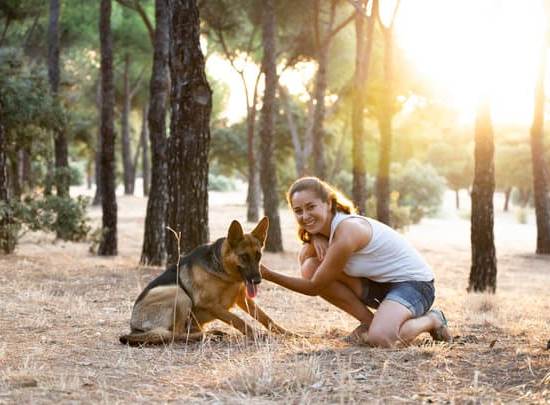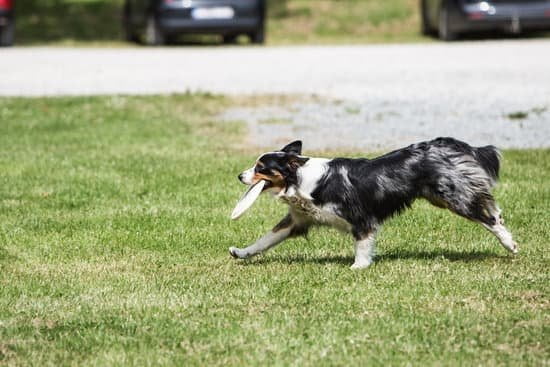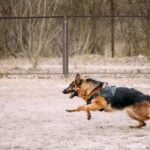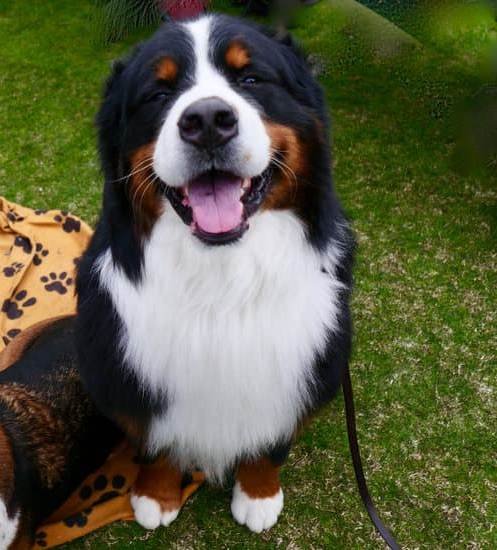Are you wondering how to train dominant behavior out of your dog? Understanding dominant behavior in dogs is the first step towards addressing and improving their behavior.
Signs of dominance in dogs can range from growling and snapping to pushing ahead of their owners on walks. This article will explore the negative effects of dominance in dogs and provide positive reinforcement training techniques, establishing leadership and authority, consistency, boundaries, redirecting dominant behavior, seeking professional help, and maintaining a successful training plan.
It’s important for dog owners to recognize that dominance in dogs can lead to various behavioral issues that may affect the relationship between the dog and its owner. This section will delve into the signs of dominance in dogs such as resource guarding, excessive barking, and refusal to obey commands. By understanding these signs, owners can be better equipped to address and train out these behaviors using positive reinforcement techniques.
Furthermore, this section will emphasize the importance of establishing leadership and authority in the household. Dogs are pack animals that thrive with clear rules and structure. Consistency and boundaries are also key aspects when training dominant behavior out of a dog. By setting clear boundaries and maintaining consistent expectations, owners can effectively address their dog’s dominance issues.
Signs of Dominance in Dogs
Understanding the signs of dominance in dogs is essential in addressing and correcting this behavior. Some common signs include growling, snarling, and showing teeth as a way to assert their dominance over people or other animals. Additionally, refusing to obey commands, resource guarding, and attempting to control certain spaces or objects can also indicate dominant behavior in dogs.
Another sign of dominance is excessive jumping up on people or putting their paws on someone’s shoulders as a way to assert physical control. It’s important for pet owners to recognize these signs early on and take action to address them before they escalate into more serious issues.
Furthermore, dominant dogs may display body language that signifies their attempt to establish control, such as maintaining direct eye contact, standing tall with raised hackles, and positioning themselves higher than others. Recognizing these signs allows pet owners to intervene early and begin implementing training techniques to address this behavior effectively.
The Negative Effects of Dominance in Dogs
Potential Aggression and Safety Concerns
Dominant behavior in dogs can lead to potential aggression and safety concerns, not only for the dog owner but also for other animals and people around them. This type of behavior can manifest in resource guarding, territorial aggression, and even threatening or harmful behaviors towards humans. It is crucial to address these negative effects of dominance in dogs to prevent any dangerous situations from occurring.
Stress and Anxiety
When a dog exhibits dominant behavior, it can create a stressful and anxious environment for both the dog and its owner. The constant need to assert dominance and control can lead to high levels of stress for the dog, resulting in anxiety-related behaviors such as excessive barking, pacing, destructive chewing, or even self-harm. Additionally, owners may also experience heightened stress due to their inability to manage their dog’s dominant tendencies effectively.
Disrupted Relationship With the Owner
Dominant behavior in dogs can disrupt the relationship between the dog and its owner. The constant power struggles and challenges for control can lead to a lack of trust and respect within the relationship.
This may result in disobedience, defiance, or even a breakdown of communication between the dog and its owner. Ultimately, addressing the negative effects of dominance in dogs is essential not only for the well-being of the dog but also for maintaining a healthy bond with their owner.
Positive Reinforcement Training Techniques
Positive reinforcement training techniques involve rewarding your dog for exhibiting the desired behavior. This can include giving treats, praise, or toys as a form of motivation for your dog to continue behaving in a positive manner. By using positive reinforcement, you are not only encouraging good behavior but also strengthening the bond between you and your furry friend.
One of the most common positive reinforcement techniques is clicker training, where a clicker is used to signal to the dog that they have performed the correct behavior and will receive a reward. Another method is using verbal praise and affection to show your dog that they have done well.
It’s important to note that timing is crucial when using positive reinforcement – the reward must be given immediately after the desired behavior is exhibited so that your dog makes the connection between their actions and the reward.
Studies have shown that positive reinforcement training techniques are not only effective in correcting behavioral issues but are also beneficial for a dog’s overall well-being. By focusing on rewarding good behavior rather than punishing bad behavior, you can create a more positive and happy environment for your pet while effectively training dominant tendencies out of them.
| Positive Reinforcement Technique | Description |
|---|---|
| Clicker Training | A method of training that uses a clicker as a signal to mark correct behavior. |
| Verbal Praise | Using encouraging words and tone of voice as a form of positive reinforcement. |
| Treats/Toys | Using food or toys as rewards for desired behaviors. |
Establishing Leadership and Authority
Establishing yourself as the leader of the pack is crucial in training a dominant dog. This involves setting clear boundaries and rules that your dog must follow. One way to establish leadership is by making your dog work for everything it wants, such as food, attention, or going outside. By doing so, you are teaching your dog that you are in control and that they must respect and obey you.
Consistency is also key in establishing leadership and authority. Dogs thrive on routine and predictability, so it’s important to consistently enforce rules and expectations. This means everyone in the household must be on board with the training plan and understand the importance of consistency in reinforcing leadership.
Another important aspect of establishing leadership is body language. Dogs communicate primarily through body language, so it’s essential to use confident and assertive body language when interacting with your dog. Standing tall, making direct eye contact, and using authoritative gestures can help convey your role as the leader.
| Aspect | Importance |
|---|---|
| Setting clear boundaries | Crucial for establishing leadership |
| Consistency | Key in enforcing rules and expectations |
| Body language | Essential for conveying authority to the dog |
Consistency and Boundaries in Training
Consistency Is Key
Consistency is essential when training a dog to overcome dominant behavior. Dogs thrive on routine and structure, so it’s important to be consistent with your commands, expectations, and rewards. If one day you allow your dog to jump up on the couch and the next day you scold them for it, it can create confusion and frustration for your pet. Consistent rules and boundaries will help your dog understand what is expected of them and what behaviors are unacceptable.
Establishing Clear Boundaries
Setting clear boundaries is crucial in training a dominant dog. Determine what behaviors are not tolerable in your household, whether it’s jumping on guests, territorial aggression, or resource guarding. Communicate these boundaries to your dog through consistent training and reinforcement. For example, if your dog displays food aggression, establish a rule that they must wait patiently until given permission to eat. Enforcing clear boundaries will help redefine the hierarchy in your household and promote better behavior from your pet.
Understanding Consequences
In addition to setting clear boundaries, it’s important to follow through with consequences for undesirable behavior. Whether it’s using a firm “no” command or temporarily removing attention or privileges, understanding consequences helps reinforce the message that certain behaviors are not acceptable.
Consistency with consequences will aid in reshaping your dog’s behavior patterns over time. It’s essential to remain firm but fair during this process to ensure that boundaries are respected while maintaining a positive relationship with your pet.
Redirecting Dominant Behavior
One of the key aspects of training a dominant dog is to redirect their behavior towards more positive and acceptable actions. Instead of allowing the dog to display dominant behavior such as growling, lunging, or refusing commands, it is important to teach them alternative behaviors that are more appropriate. Redirecting dominant behavior requires patience, consistency, and positive reinforcement techniques.
When a dog displays signs of dominance, it is essential to immediately redirect their attention and focus onto something else. This can be achieved by using toys, treats, or commands to distract the dog from their current behavior and encourage them to engage in activities that promote obedience and respect.
For example, if a dog starts growling at another pet or person, the owner can quickly intervene by using a command such as “sit” or “stay” and rewarding the dog for complying.
Another effective way to redirect dominant behavior is through training exercises that focus on impulse control and obedience. Teaching the dog to wait for permission before eating, going outside, or receiving attention can help establish boundaries and respect for authority. Additionally, engaging in regular training sessions that reinforce basic commands such as “sit,” “stay,” and “come” can help redirect the dog’s energy towards positive behaviors and diminish their need to exert dominance.
Consistency is crucial when redirecting dominant behavior in dogs. It is important for all family members or caregivers to consistently apply redirection techniques and reinforce positive behaviors. By doing so, the dog will learn that displaying dominant behavior does not result in attention or rewards but instead complying with commands and exhibiting respectful behavior leads to desirable outcomes.
Seeking Professional Help
If you have tried various training techniques and still struggle to control your dog’s dominant behavior, it may be time to seek professional help. Professional dog trainers and animal behaviorists are equipped with the knowledge and experience to assess your dog’s behavior and develop a customized training plan to address their dominance issues.
When seeking professional help for your dog’s dominant behavior, consider the following:
- Research: Take the time to research and reach out to reputable and experienced dog trainers or animal behaviorists in your area. Look for professionals who specialize in dealing with dominance issues in dogs.
- Consultation: Schedule a consultation with a potential trainer or behaviorist to discuss your dog’s behavior and their approach to training. This will help you determine if they are the right fit for addressing your dog’s dominant behavior.
- Customized Training Plan: A professional will create a personalized training plan tailored to your dog’s specific dominance issues. This plan may include positive reinforcement techniques, leadership exercises, establishing boundaries, and redirecting dominant behaviors.
It is important to understand that seeking professional help does not mean you have failed as a pet owner. Instead, it demonstrates your commitment to addressing your dog’s behavioral issues in a responsible and effective manner. With the guidance of a professional, you can work towards achieving a balanced and harmonious relationship with your beloved pet.
Maintaining a Successful Training Plan
Once you have implemented positive reinforcement techniques, established leadership and authority, and consistently redirected dominant behavior in your dog, it is important to maintain a successful training plan to ensure long-term success. Here are some key tips for maintaining your training plan:
- Continued Practice: Consistency is key when it comes to maintaining a successful training plan. Continue to practice the positive reinforcement techniques and remain consistent with the boundaries you have set for your dog.
- Regular Exercise: Providing regular exercise for your dog is essential in maintaining a successful training plan. A well-exercised dog is generally more relaxed and less likely to exhibit dominant behavior.
- Reinforcement of Boundaries: It is crucial to continue reinforcing the boundaries you have established with your dog. This means not allowing any exceptions or leniency when it comes to rules and commands.
By maintaining a successful training plan, you can ensure that the progress you have made in curbing dominant behavior in your dog will be sustained over time. Remember that consistency, patience, and dedication are key components of maintaining a well-behaved and balanced relationship with your canine companion.
Conclusion
In conclusion, training the dominant behavior out of a dog takes time, patience, and consistency. By understanding the root causes of dominance in dogs and recognizing the signs early on, pet owners can address this behavior effectively. Positive reinforcement techniques have been proven to be successful in reshaping a dog’s behavior, along with establishing clear leadership and boundaries within the household.
It is important for pet owners to remember that seeking professional help is not a sign of failure, but rather a proactive step towards addressing any persistent dominant behaviors in their dog. Trainers and behaviorists can provide valuable insight and guidance tailored to the specific needs of both the dog and its owner.
Ultimately, achieving a balanced and harmonious relationship with your dog is possible through dedication to a successful training plan. Consistency, patience, positive reinforcement, and seeking professional help when necessary are all key components in reshaping dominant behavior into more desirable traits. With time and effort, pet owners can enjoy a fulfilling and rewarding bond with their canine companions.
Frequently Asked Questions
How Do You Break a Dog’s Dominance?
Breaking a dog’s dominance requires consistent training and clear communication. Establishing yourself as the pack leader is essential, which means setting boundaries, enforcing rules, and not rewarding dominant behavior. Providing structured obedience training, exercise, and mental stimulation can also help redirect the dog’s focus away from dominant behaviors.
Can a Dominant Dog Be Trained?
Yes, a dominant dog can be trained with patience, consistency, and positive reinforcement techniques. It’s important to establish yourself as the leader through calm assertiveness and consistent training. Redirecting the dog’s energy through obedience training, engaging activities, and clear communication can help modify dominant behavior over time.
How Do I Create Dominance Over a Dog?
Creating dominance over a dog involves establishing leadership in a calm and assertive manner. This includes setting boundaries, providing structure through rules and routines, enforcing obedience training, and using consistent communication to convey expectations to the dog. Building trust and respect through positive reinforcement techniques is also crucial in establishing dominance without resorting to harsh punishment or intimidation tactics.

Welcome to the blog! I am a professional dog trainer and have been working with dogs for many years. In this blog, I will be discussing various topics related to dog training, including tips, tricks, and advice. I hope you find this information helpful and informative. Thanks for reading!





